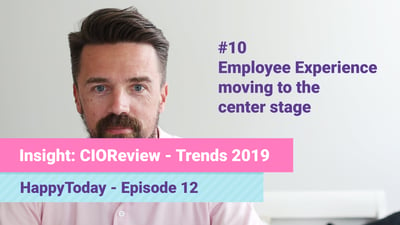Transparency with Experience Data
In this episode we discuss with Sami on why it's important to have transparency inside the enterprise with experience data.
Related content

07.05.2019
CIO Interview: John Sullivan, Avanti West Coast
In this episode Pasi goes and meets John Sullivan, CIO and Project Director at Avanti West Coast. We talk about the ...
Read more >
26.06.2019
Top ITSM Trends to Watch in 2019 by CIOReview.com
Pasi gives his take on a recent CIOReview.com article on Top Service Management Trends to Watch in 2019. Let's give a ...
Read more >
